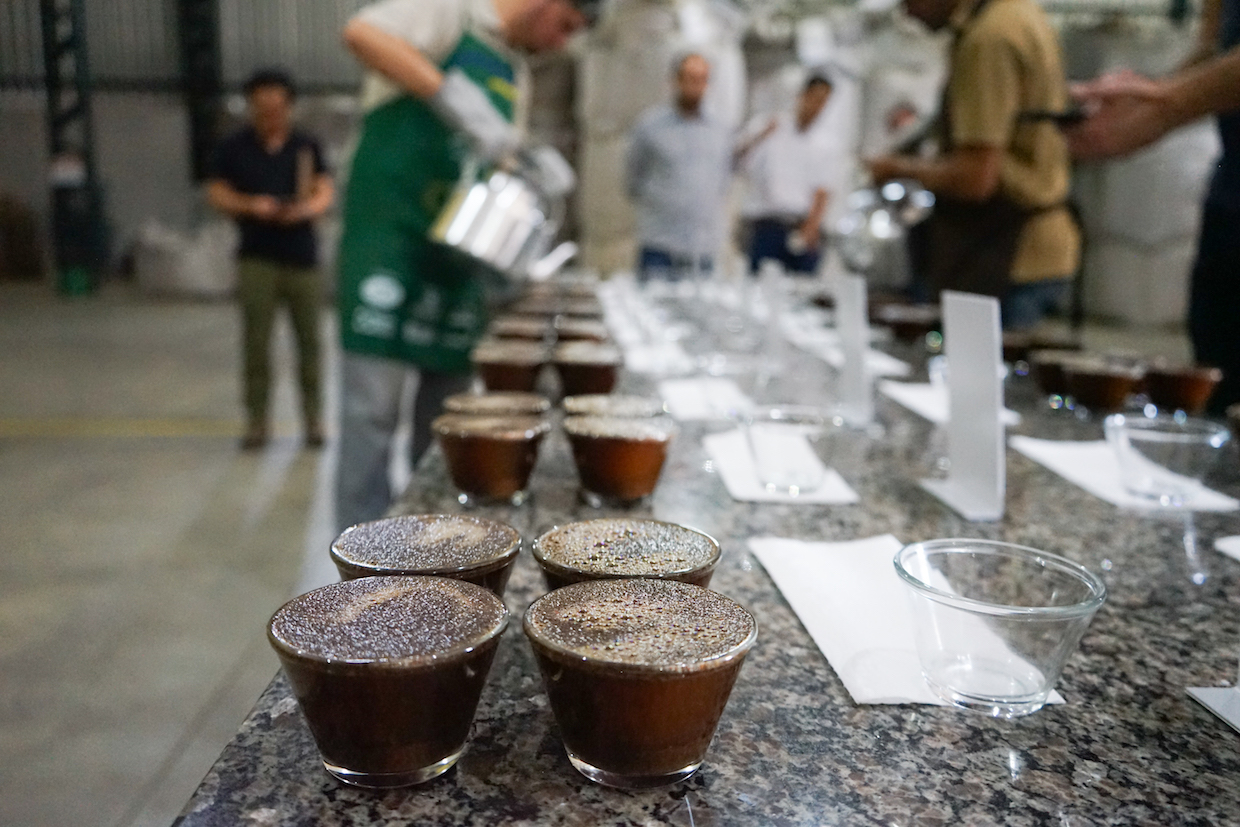
A cupping at the SanCoffee warehouse as The Cup of Excellence coffee quality competition and auction program celebrated its 20th anniversary earlier this year in Brazil. Daily Coffee News photo by Howard Bryman.
Driven by the pursuit of quality, consumer interest in traceability and sustainability, and the proliferation of the internet, the specialty coffee industry has changed a lot over the past 20 years.
The Cup of Excellence (CoE) green coffee quality competition and auction program has played a substantial role in bringing about some of the more positive changes, while also serving as a sort of microcosm of the industry in the countries in which it has worked.
“Every issue that the coffee industry runs into, Cup of Excellence will run into,” Susie Spindler, the co-founder and former executive director of CoE organizer the Alliance for Coffee Excellence (ACE), told Daily Coffee News. “Whether it be harvest issues, crop cycles, credit issues, finance problems, transportation issues, logistics, all of that we run into. We’re constantly in flux.”
A genuine effort to make its complicated supply chain more transparent and equitable is what sets the specialty coffee industry apart from most other agriculture or commodity-based industries. Few programs have had as deep or as visible an impact in that effort than has Cup of Excellence, which since 1999 has showcased the work of producers in participating countries through a rigorous cupping competition, narrowing hundreds of green coffee submissions down to a single top-scoring winner. Critically, the program then connects buyers directly to producers through an online auction of the contest’s highest-quality, traceable green coffee lots.
As the contest’s prestige has grown, winning lots have been routinely sold to buyers from all over the globe at 10x, 20x or even 30x higher than market prices. Champions are widely recognized for their achievement, while new direct connections are made between dozens of farmers and buyers with every event.
“We bring the marketplace in as complete partners to the farmers,” said Spindler. “We’re kind of this middle thing that makes sure that we’ve selected the highest quality, and that it’s what the marketplace wants, but that it’s what the farmers can produce. It’s a really interesting dynamic, and it’s so fluid all the time.”
Adapting and expanding the program over the past two decades has required a balance more intricate than the flavors of a 90-plus Gesha. For while technology marches forward and new production methods and trade models come about, coffee’s antiquated trading systems and politics also continue to hold it back.
This year, ACE has partnered with in-country organizations to co-produce Cup of Excellence competitions in nine different coffee-producing countries throughout Latin America and Africa, with plans to further expand the program to Ethiopia and Ecuador in 2020.
To celebrate the contest’s 20th anniversary, organizers brought the CoE back to the city in which it was born in 1999 — Lavras, Brazil.
Foundations
It was largely Spindler’s task to oversee and steer CoE through the choppy waters of its beginnings. For the first five years after founding the CoE organizational body in 2002, Spindler ran ACE from a spare bedroom in her Montana home when not in countries of coffee’s origin to navigate bureaucracies, oversee the fast-paced shipping of samples, and stand her ground in rooms full of men who wanted adjustments to rules that would favor their regions’ coffees.
Today, from a spacious facility in a high rise in Northwest Portland, Oregon, ACE’s staff of eight spreads out with rooms for meetings and classes, a state-of-the-art cupping lab and a view clear across the Willamette River.
“I don’t think it’s ever done,” Spindler, who now serves as an executive consultant for ACE and CoE, told DCN in Brazil. “The goal for Cup of Excellence, the mission statement, is to discover the highest quality and reward the farmers. That’s easy to say, but that means you’re changing an infrastructure that has been very resistant to change.”
A Sensory Evolution
Even around the cupping tables in 1999, there was resistance of a kind. George Howell, the founder of George Howell Coffee, oversaw many of those cupping tables in the early years of the CoE.
“Back then, before the Q existed, CQI and all of that, the older [cupping professionals] had been trained in an older school, and they were looking for lack of defects,” Howell told DCN. “You had to train them completely out of that.”
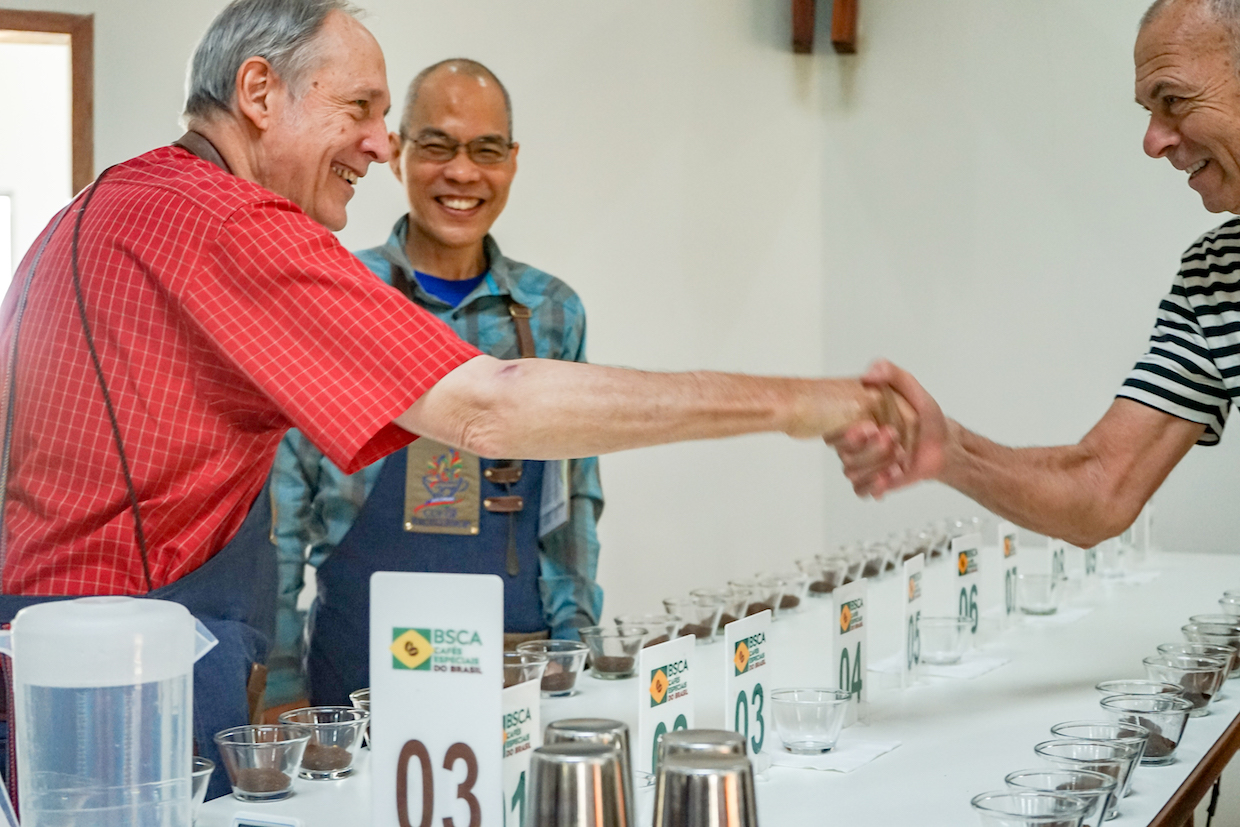
George Howell (left) and Andrew Barnett of Linea Caffe at the recent Brazil Cup of Excellence. Daily Coffee News photo by Howard Bryman.
Howell was the coffee quality expert stationed in Brazil in the late 1990s for the International Coffee Organization-led Gourmet Coffee Project, which was designed to identify and separate coffees of higher quality so that its producers could be commensurately compensated.
When that effort concluded with a report but no forward-moving action plan, Spindler, Howell and others decided to create the CoE as a means of actually achieving the goals laid out by the Gourmet Coffee Project.
“The whole point of this exercise was to find ways to produce higher quality and higher prices simultaneously,” said Howell. “I hate this idea that I’m going to write a whole thesis on it and hand it to you and say ‘do what you will with it.’ To my mind, that’s no answer at all. So that’s why we came up with the auction and the competition.”

A judge scores a coffee at the Cup of Excellence competition in Brazil. Daily Coffee News photo by Howard Bryman.
Through his experience, Howell already knew how to establish protocols and parameters for an effective competition, although bringing in a variety of judges and calibrating older coffee professionals with younger ones presented its own set of challenges.
Howell would overhear hushed discussions among the old guard around the cupping table about what was wrong with certain coffees, and had to urge them simply to drop it, move on, and stick to a focus on positives, not negatives.
“It absolutely wasn’t about defects,” said Howell. “It was from the start a search for gems, for the best. It was a search for clean and sweet.”
Calibration for judging the competition in the earliest years was a relatively brief exercise that, by 2002, had become far more sophisticated, according to Howell. Today it involves a series of focused cuppings with a variety of coffees that range from excellent to distinctly flawed, potentially with one coffee cunningly repeated.
Howell’s revisions to the cupping form have also helped hone the evaluation process, particularly in distinguishing between the intensity and the quality of specific attributes.
“For the first time that I know of, it was no longer the intensity of the acidity or the strength of the body that counted,” said Howell. “You had a place to mark that, because that was very important as feedback for farmers and for yourself, but you also had to judge the acidity and the body by their quality, which was different. For me, acidity is like illumination; it can be a harsh light, and it can be a warm light. In specialty, we’re still in an ongoing search for the vocabulary for what makes coffee great. That’s not ended yet.”
Juries in the earlier years were composed mostly of cuppers from the United States, Europe and Japan. Australians soon joined, and now representatives from South Korea and China are also taking part. Cropster-enabled Probatino roasters now keep the cupping roast profiles stable; lighting, temperature, humidity, water chemistry, and more are now controlled where possible. Judges in El Salvador, Honduras, and soon also Guatemala will be using digital cupping forms on tablets to score the coffees.
While tools and standards of the trade have changed, so have the coffees that are landing in the top 10s. This has been the result not only of the rising objective quality of coffees produced through different methods, but also of the shifting mentalities among judges. In Brazil, in 1999 and for many years that followed, Howell said it was almost entirely pulped naturals that initially took the top spots.
“Occasionally you’d see a natural come in, but in those days, the juries were not ready for that,” said Howell. “Once naturals became more popular they were brought into it as a separate competition for quite a few years. I, for one, was not ready for it back in those early days. On the international market, [natural process] was almost universally regarded as something of poor quality. We were looking for more evenness, more predictability. It just wasn’t time yet.”
This year in Brazil, naturals and pulped naturals competed together once again, alongside other, more experimental processing methods such as anaerobic fermentation.
“I’m very impressed by [this year’s] jury and how it’s able to deal with each type of coffee,” said Howell. “I felt it was extraordinarily even-handed, and that was always a big concern of mine because you have the naturals, and now the anaerobic, that are very powerful flavors on the same table. And yet [this year’s judges] are also able to distinguish more subtle coffees, and give them a place.”
Changing Practices and Perceptions
Brazil was an ideal country in which to launch the initial contest. Its coffee industry was well established; it had the resources and organizational support; and yet within the global specialty coffee marketplace of the 1990s, its reputation for quality was relatively low.
The effect CoE has had on on the latter factor has been transformative. DCN spoke with Fazenda Samambaia owner, SanCoffee President and Brazilian Specialty Coffee Association (BSCA) Executive Board Member Henrique Cambraia about the changes he has witnessed in Brazil since the advent of CoE.
“Cup of Excellence is a really important motivational tool for us,” Cambraia said. “It really has changed our lives, considering the focus on quality and purpose into the farm.”
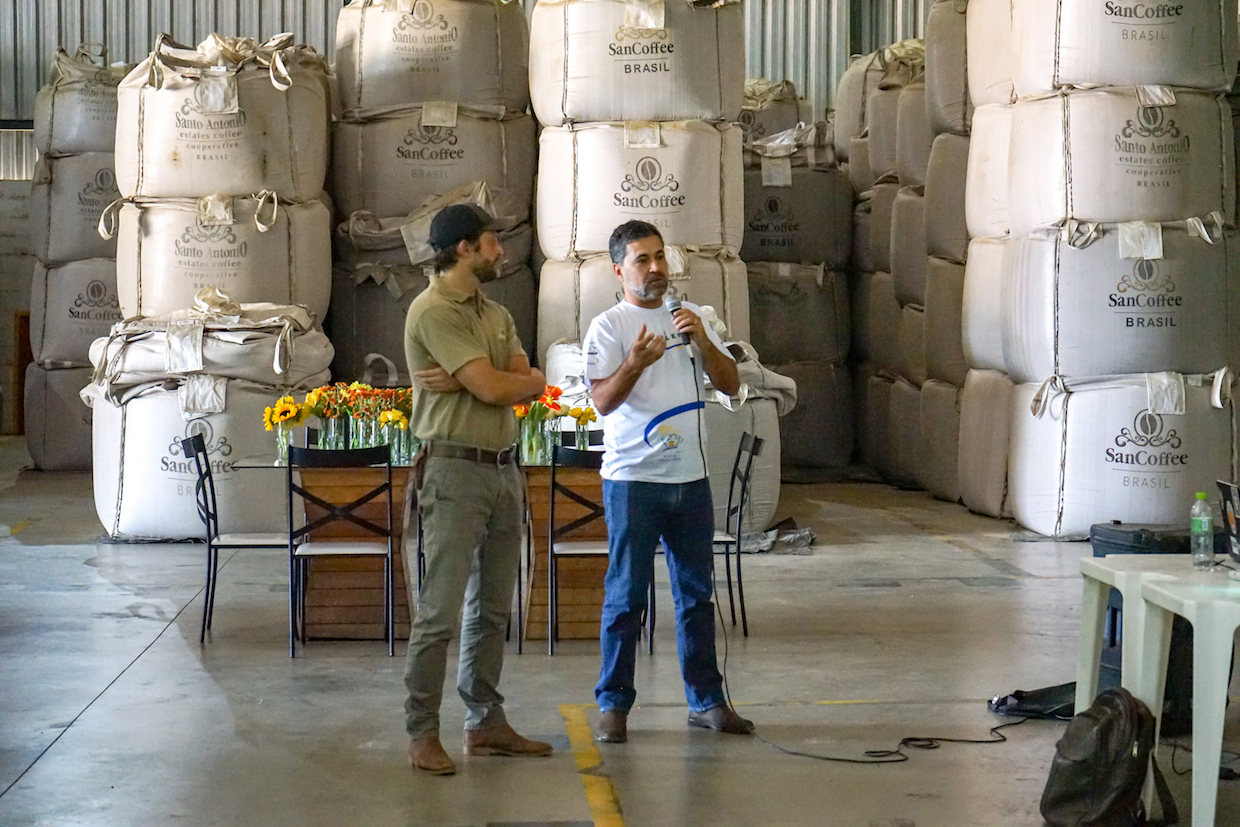
Henrique Cambraia speaks during a tour of the SanCoffee warehouse. Daily Coffee News photo by Howard Bryman.
Cambraia’s family has been growing coffee in the Santo Antônio do Amparo area since 1896. He founded the cooperative Santo Antonio Estates Coffee, later renamed SanCoffee, in 2000, in part because farmers in the area were so inspired by the opportunities presented by CoE. SanCoffee grades, mills, stores, markets and exports a membership of roughly 20 mid-sized farms.
Fazenda Samambaia has ranked highly in multiple CoEs over the years, while another SanCoffee member, Fazenda Guariroba, has taken top honors more than once. Cambraia said the spirit of competition has been a healthy and effective push in Brazil from the beginning, as farms located at higher altitudes, whose terroir exhibits greater potential for quality to begin with, compete with coffees such as those from Santo Antonio de Amparo which is around 1,100 meters above sea level.
While the uptick in quality that Cambraia witnessed within Brazil was dramatic from 2000 to 2010, the leap upward from 2010 to today has been even greater, and from a more diverse representation of different regions of Brazil, he said.
“We can see in the history from Cup of Excellence, we have regions like Mantiquera de Minas, it was a hidden treasure in Brazil,” said Cambraia. “Even the Arapongas areas in the eastern part of Minas Gerais, it used to be known for phenolic tastes, and nowadays they do beautiful, bright, jasmine coffees in Brazil. All these regions were discovered or highlighted because of Cup of Excellence. The impact Cup of Excellence caused in many lives of Brazilian growers is very solid; it’s huge.”
The contest has continued to push its entry qualifications upward. In 2019, the minimum score for a coffee to pass through into the auction was 87, one point higher than last year. Only 30 coffees are now admitted into the main CoE auction, down from 40. The stakes are trending higher, too. The highest price paid for a coffee in the auction in 1999 was $1.72 per pound. In last year’s CoE auction in Costa Rica, the winning lot sold for a whopping $300.09 per pound.
A More Accessible Future
ACE Executive Director Darrin Daniel, now in his third year at the helm, said that when looking at data from his first time on a CoE jury in 2003 up through today, the increase in average cup scores across the board indicates that farmers are communicating with one another to achieve higher quality.
Yet ACE has also received feedback from producers about the financial strain of submitting even five 60-kilo bags of green coffee — the minimum amount required to enter the competition — without more immediate compensation. To make the contest more accessible going forward, ACE is developing a pre-financing system that could offer a generous up-front base price, at least to those farmers that score into the top 30.
“This would be a big change, if we could move to that pre-financing model,” said Daniel, who noted that while ACE would then bear some risk, the CoE auction track record so far indicates that risk is manageable. “It would just be a good insurance policy for producers. They wouldn’t have to have it tied up.”
Similarly, on the buyers’ end, as prices for top lots have skyrocketed in recent years, ACE is hoping to organize more purchasing groups so that a larger number of smaller companies can afford the smaller quantities they want, thereby spreading more CoE prize-winning coffees to a wider audience of consumers.
Another big auction-focused change on the horizon is to split ACE and CoE into two separate entities that may share resources. To this point, ACE’s nonprofit status has been as a 501c6 organization, meaning that donations aren’t considered tax-exempt acts of charity due to its connection to the marketplace via auctions. The plan, currently underway, is to establish CoE as a standalone tax-exempt 501c3, and for ACE to continue on and to develop additional auction formats separate from the competition.
“The idea for the split is that we could seek more foundational support, more funding from institutions that like what we do but aren’t able to get a tax credit for a refund if they want to do a donation,” said Daniel. “The beauty of the split is that each entity can help support the other on revenue and growth.”
ACE has also pursued more classes and sensory education training designed to cultivate evaluation skills and cupping experience in producing countries. There’s also been interest in this in consuming countries, which is where the classes could not only generate revenue but also grow the available pool of CoE jury talent.
“It’s circular, because that helps those judges that are younger or new to get trained and educated on what we’re doing, then come into the CoE themselves,” said Daniel. “We’ve been doing a lot of those in Thailand, China, Korea. We’re doing one in Mexico coming up.”
The work of engagement is never ending, yet it’s been crucial to the success of the Cup of Excellence auction program throughout its first two decades of finding great coffees and rewarding the farmers behind them.
“At 20 years, you’re looking at where the next 20 is going to go and I think, as Susie’s always said, our mission is really simple, it’s very straightforward,” said Daniel. “It really should stand the test of time, and it obviously has until now. I think for us, remaining relevant means listening to the industry, listening to specialty and buyers and what they say.”

2019 Cup of Excellence jury of professional cuppers in Brazil. Daily Coffee News photo by Howard Bryman.
Howard Bryman
Howard Bryman is the associate editor of Daily Coffee News by Roast Magazine. He is based in Portland, Oregon.
Comment
1 Comment
Comments are closed.



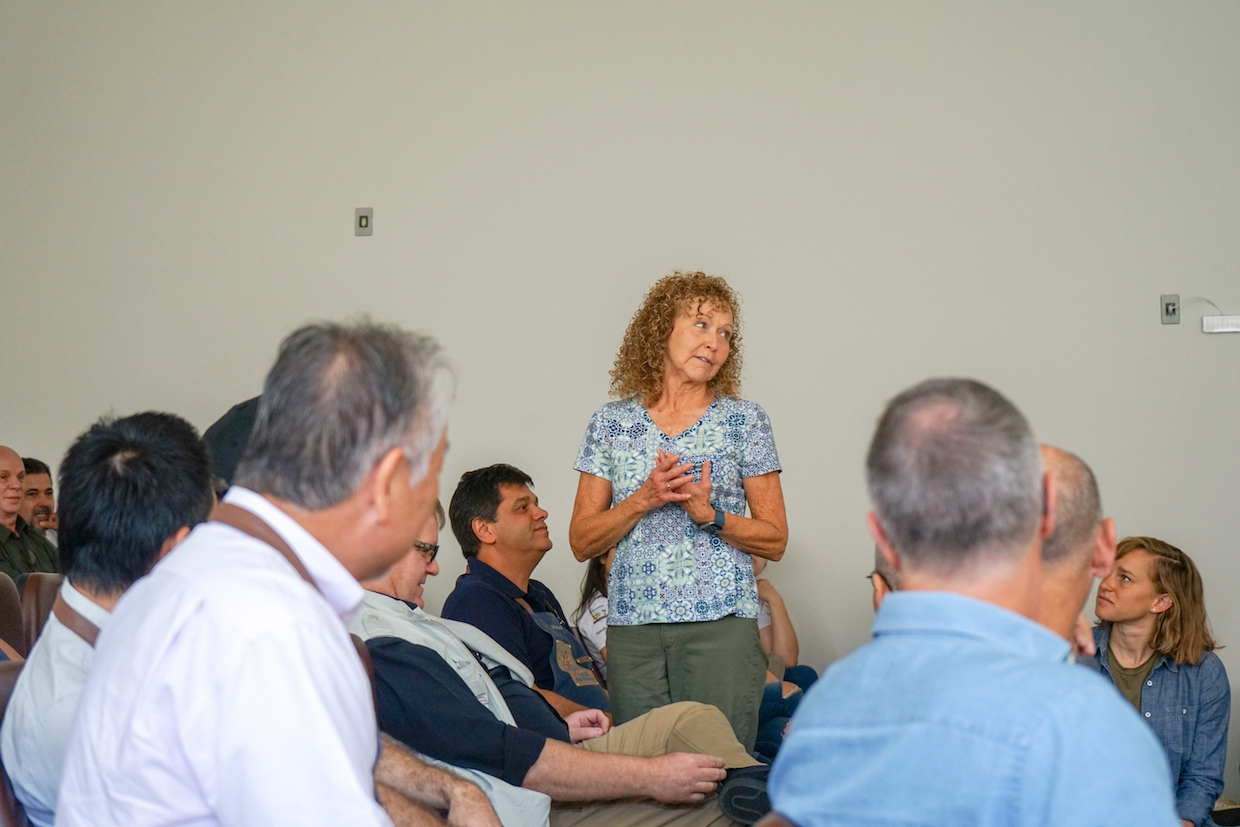
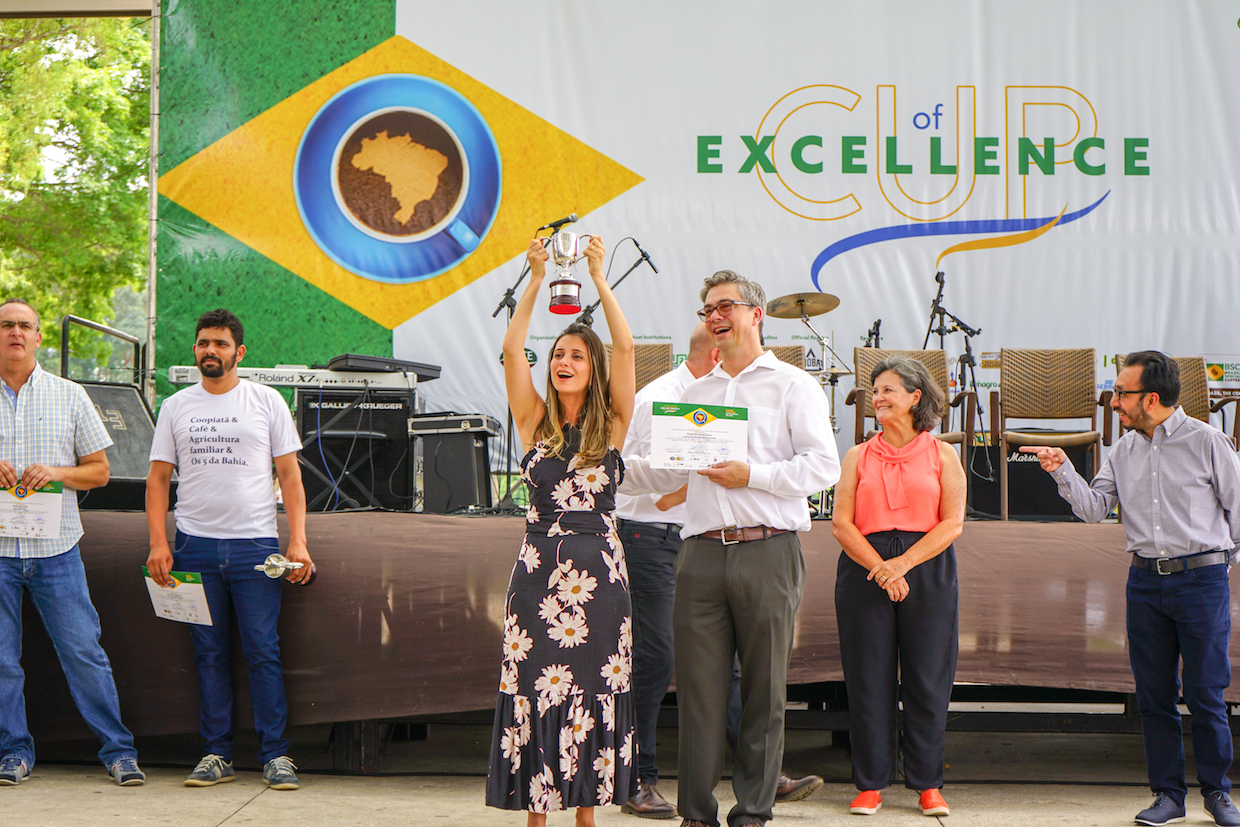
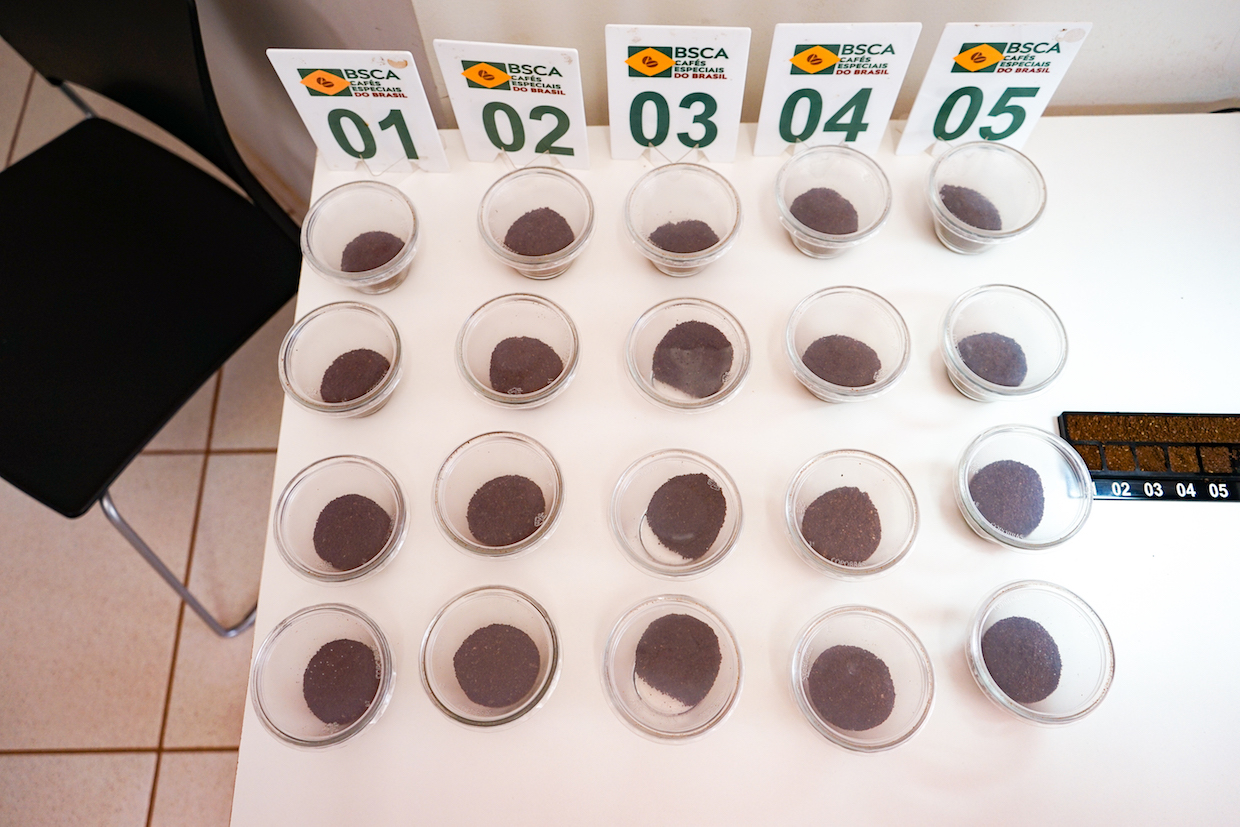
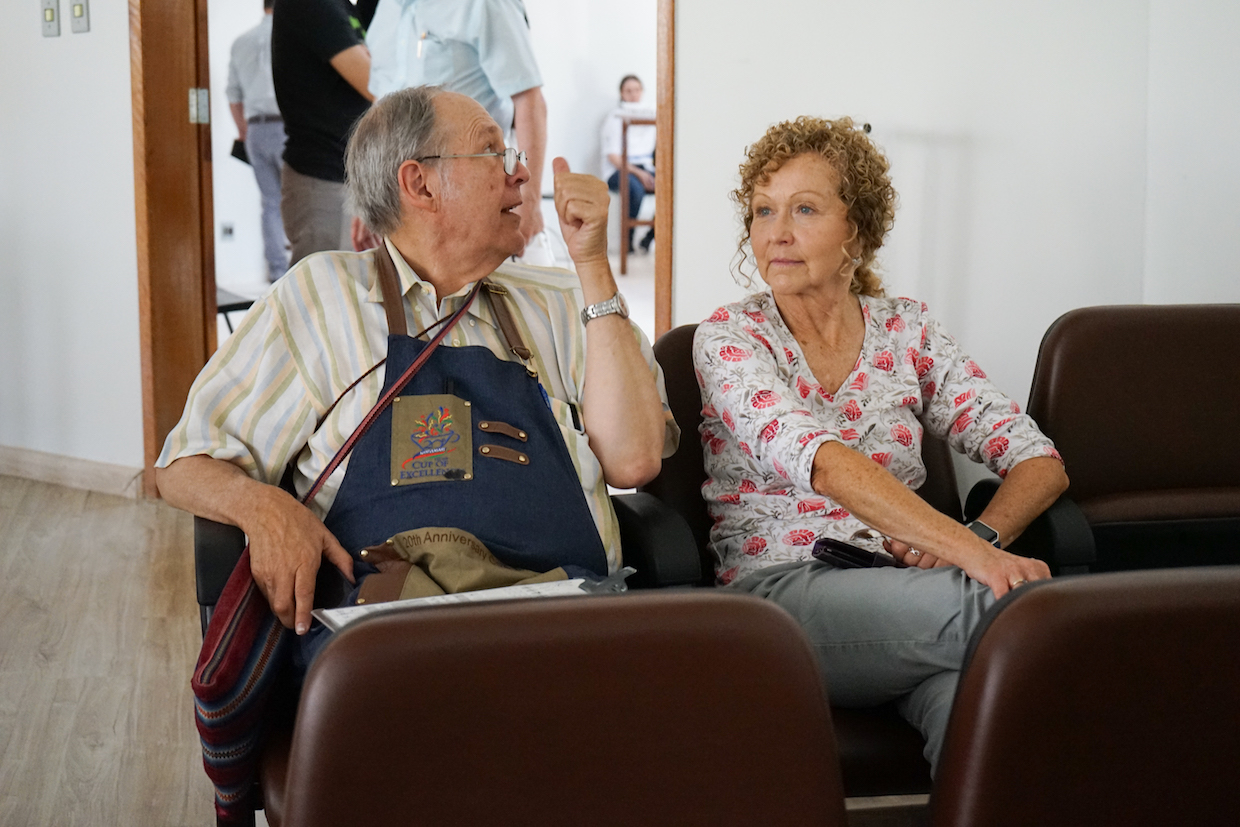
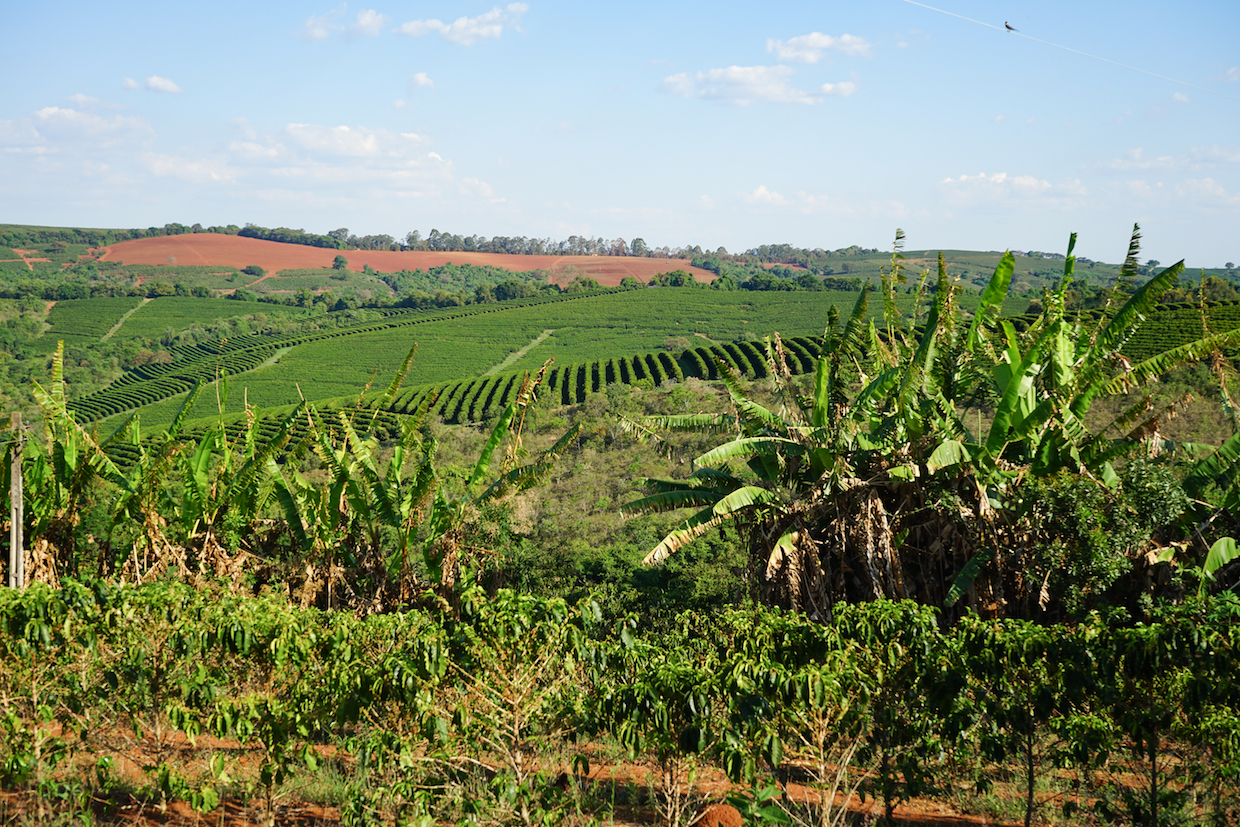

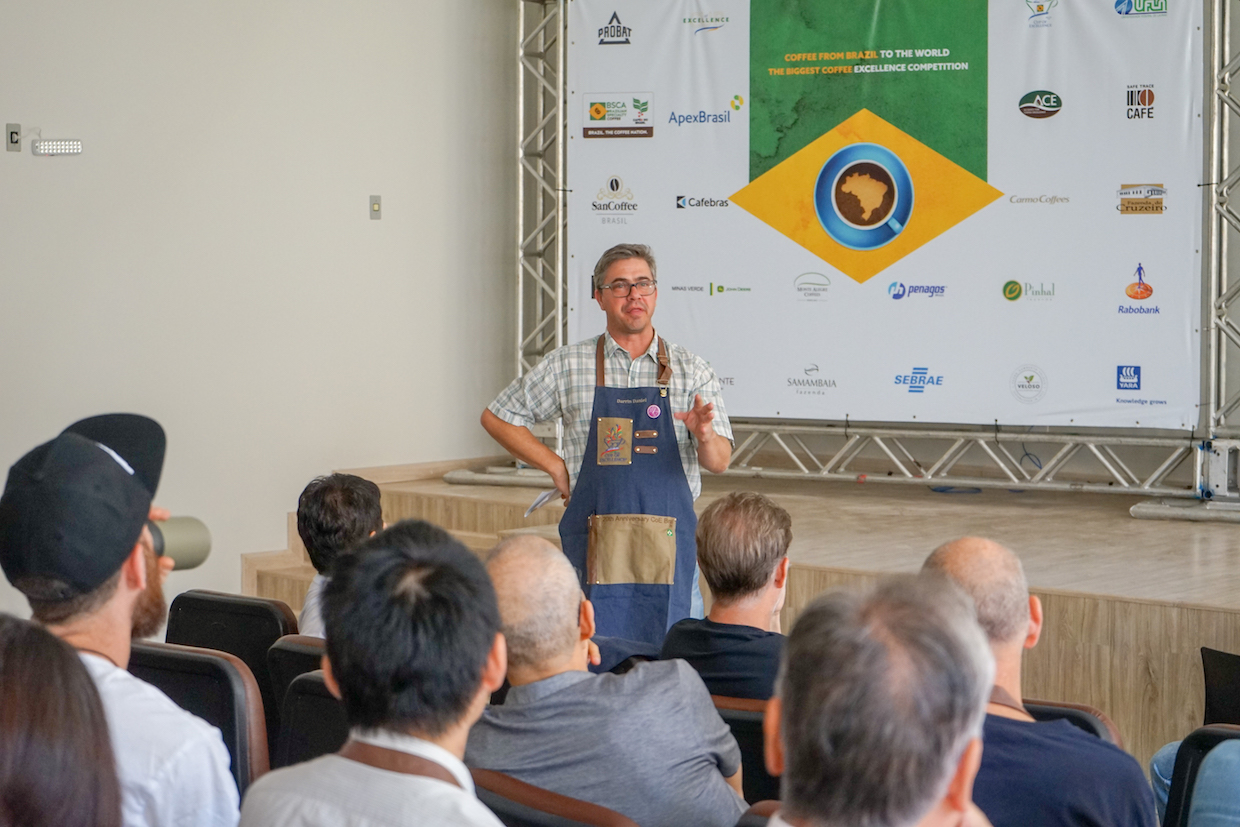
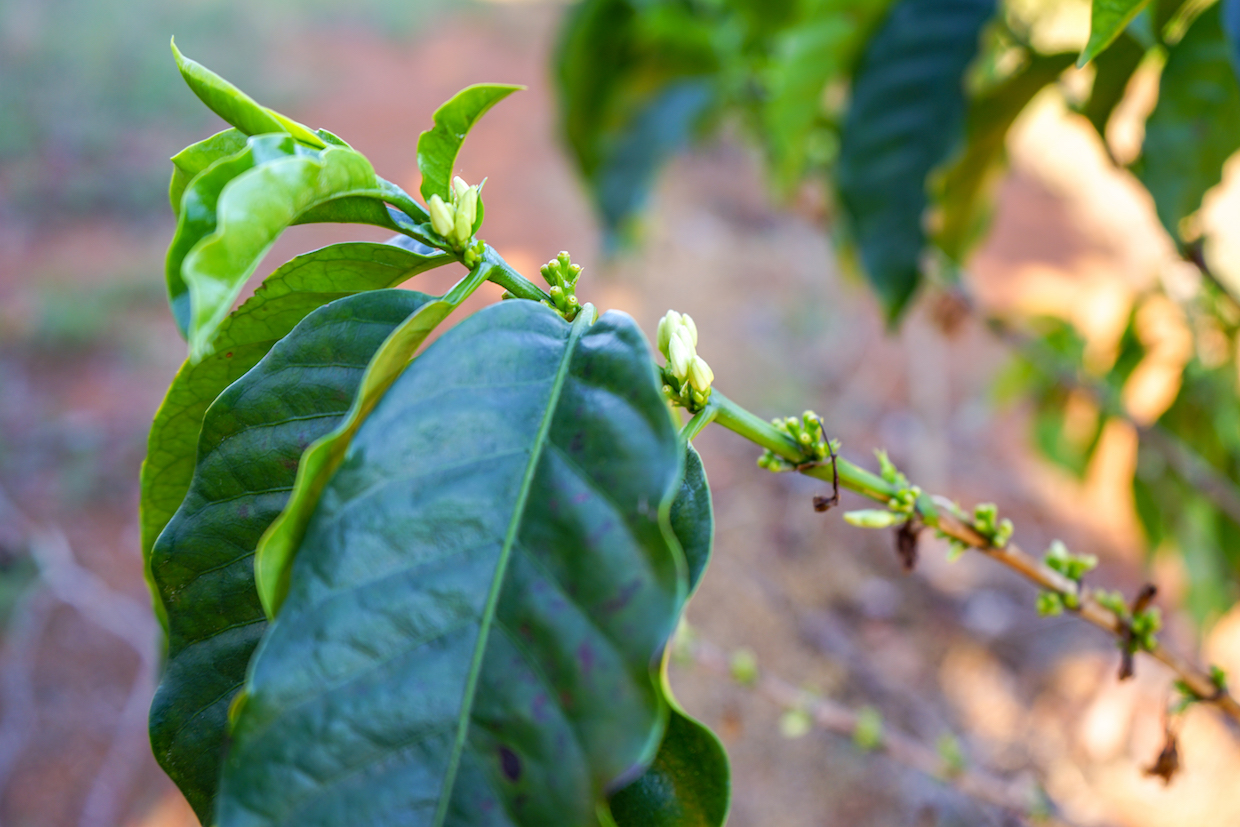



This excellent story on COE/ACE about an important and universal development in the coffee industry, must promote a continued focus on small (as in farmers and roaster & retailers). Highest respect and regards to Susie Spindler — who literally goaded our tiny, micro company into attending the El Salvador COE in 2004 — and to George Howell. Through our involvement & onward, I developed friendships with so many of the finest folks at both ends of the spectrum (coffee & otherwise) I’ve ever known. Keep it rolling.